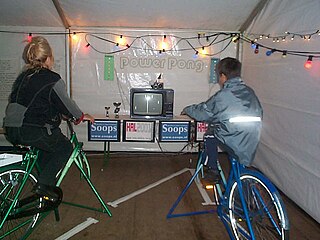
Fitness game, exergame, and gamercise are terms used for video games that are also a form of exercise. Fitness games rely on technology that tracks body movement or reaction. The genre has been used to challenge the stereotype of gaming as a sedentary activity, and promoting an active lifestyle. Fitness games are seen as evolving from technology aimed at making exercise more fun.

nDreams, Ltd. is a company that develops and publishes video games. It is located in Farnborough, Hampshire in the United Kingdom. The company was formed in August 2006 by former SCi and Eidos creative director, Patrick O'Luanaigh. Since formation, the developer has worked on numerous projects for different video game platforms, initially PlayStation Home, the virtual world on Sony's PlayStation 3 console, where they grew to become one of the leading publishers. From late 2013 nDreams began working on content for virtual reality (VR) headsets, such as Sony's PlayStation VR, Oculus Rift and Samsung Gear VR. nDreams has stated that they are now entirely focused on developing content for virtual reality.
Eve: Valkyrie was a multiplayer dogfighting shooter game set in the Eve Online universe that was designed to use virtual reality headset technology. Originally launched for Microsoft Windows for use with the Oculus Rift virtual reality headset, CCP Games had announced they plan to enable cross-platform play between the three major VR systems: the Oculus Rift, the HTC Vive, and the PlayStation VR. Released in March 2016, the game had two game mode options: Chronicles could be played in single player, while Combat allowed eight by eight combat PvP missions. Reviews generally criticized the limited plot and limitations of single player mode, although the described "arcade experience" was praised for having intuitive controls and "exhilarating" dogfighting features, with PC Powerplay dubbing it "arguably the best VR experience currently available for the [Oculus Rift] platform."
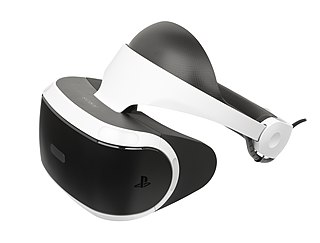
The PlayStation VR is a virtual reality headset developed by Sony Interactive Entertainment, which was released in October 2016.

Studio Roqovan was an American independent game and VR development studio made up of former Infinity Ward and Disney employees. It is headquartered in Los Angeles.

Psychonauts in the Rhombus of Ruin is a virtual reality adventure game developed by Double Fine Productions. It was released for PlayStation VR in February 2017 and on Microsoft Windows in April 2018. The game's story bridges the events between Psychonauts and Psychonauts 2.

Job Simulator: The 2050 Archives, commonly referred to as simply Job Simulator, is a virtual reality simulation video game developed and published by Owlchemy Labs for Microsoft Windows, PlayStation 4, PlayStation 5, Oculus Quest, and Oculus Quest 2, in which players participate in comical approximations of real-world jobs. A sequel, Vacation Simulator, was released in 2019.
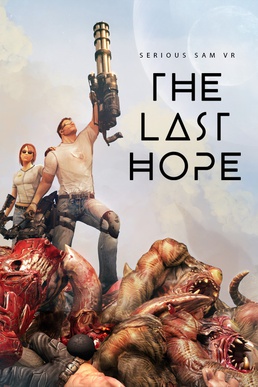
Serious Sam VR: The Last Hope is a 2017 first-person shooter game for virtual reality (VR) developed by Croteam VR and published by Devolver Digital. One or two players fight waves of enemies, including bosses, across five thematic planets. The enemies approach from a 180° field and the player can use dual-wielded weapons while moving across a limited space. To develop The Last Hope and experiment with other VR implementations, Croteam VR was established as a specialised division of Croteam. Devolver Digital announced the game at E3 in June 2016 and launched it in early access that October. After several updates, it was released in September 2017 for Windows with compatibility for the HTC Vive and Oculus Rift VR headsets. The Last Hope received mostly positive reviews, with post-release reception lauding the game's gameplay and visuals while criticising difficulty spikes and issues with the online multiplayer mode.

Robo Recall is a virtual reality first-person shooter game developed and published by Epic Games for Oculus Rift and Oculus Quest platforms. The game was released for the Oculus Rift on March 1, 2017, and an Oculus Quest version titled Robo Recall: Unplugged was released on May 21, 2019. Players that activate their Oculus Touch virtual reality controllers with its software are able to download the game for free.

Audioshield is a rhythm game created by Dylan Fitterer for the HTC Vive. The game generates levels based on music supplied by the player. The player blocks incoming "notes" with a shield of matching color.
The Mage's Tale is a first-person virtual reality dungeon crawler role-playing video game developed and published by inXile Entertainment in partnership with Oculus VR. It is a spin-off of The Bard's Tale, set before the events The Bard's Tale IV: Barrows Deep. It is inXile's first virtual reality title.

A virtual reality game or VR games is a video game played on virtual reality (VR) hardware. Most VR games are based on player immersion, typically through head-mounted display unit or headset with stereoscopic displays and one or more controllers.

Beat Saber is a virtual reality rhythm game developed by two Slovaks Ján Ilavský, Vladimír Hrinčár and published by Czech game developer Beat Games. It takes place in many different surrealistic neon environments and features the player slicing blocks representing musical beats with a pair of brightly-colored sabers. Following an early access release in May 2018, the game was officially released for PlayStation 4 and Windows on May 21, 2019, and supports most virtual reality headsets including HTC Vive, Oculus Quest, Quest 2 and Quest Pro, PlayStation VR, PlayStation VR2, and Valve Index.

VR Kanojo is a virtual reality eroge social simulation game made by Illusion, released in February 2017 for the HTC Vive and Oculus Rift on Microsoft Windows PCs. VR Kanojo is the successor to Illusion's 2010 game REAL Kanojo, and follows a similar premise where the player is allowed to interact with a virtual girlfriend. It has been described as similar to Bandai Namco's Summer Lesson.
TheBlu is a digital media franchise that utilizes virtual reality technology to create 3D-rendered, interactive simulations of underwater environments in the world's oceans. Iterations of TheBlu have appeared as applications for the Samsung Gear VR and HTC Vive headsets and on the Steam and Oculus stores. In 2018, the most recent project in the franchise was launched using the Dreamscape Immersive platform, allowing up to six users to engage in a location-based experience. TheBlu was initially released as an interactive web application and screensaver by Wevr in 2011.
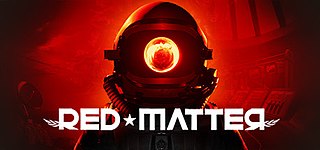
Red Matter is a 2018 sci-fi virtual reality game developed and published by Spanish studio Vertical Robot. The player plays as Agent Epsilon, who crash lands on one of Saturn's moons, Rhea, and goes to explore a nearby military base belonging to the fictional People's Republic of Volgravia. The game received positive reviews from critics, who praised the atmosphere of the environments, but criticized some of the puzzles as being confusing. Red Matter released on May 24, 2018 for Oculus Rift, with versions for the HTC Vive, Oculus Quest, and PlayStation VR launching in November 2018, December 2018, and August 2019, respectively. A sequel, Red Matter 2, was released for Steam VR and Meta Quest 2 on 18 August 2022 and for Playstation VR2 on 18 May 2023.
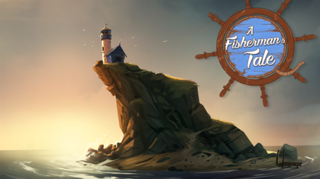
A Fisherman's Tale is a 2019 virtual reality game developed by InnerspaceVR and published by Vertigo Games. The game is set in a recursive world where the player controls a fisherman in a lighthouse. The game was released on Microsoft Windows and PlayStation 4 on January 22, 2019, with a Oculus Quest port being released in 2020.

Crisis on the Planet of the Apes VR is a 2018 action and virtual reality game. It was developed by Imaginati and published by FoxNext for PlayStation 4 and Microsoft Windows. It is based on the Planet of the Apes reboot film series, taking place between Rise of the Planet of the Apes and Dawn of the Planet of the Apes.



















